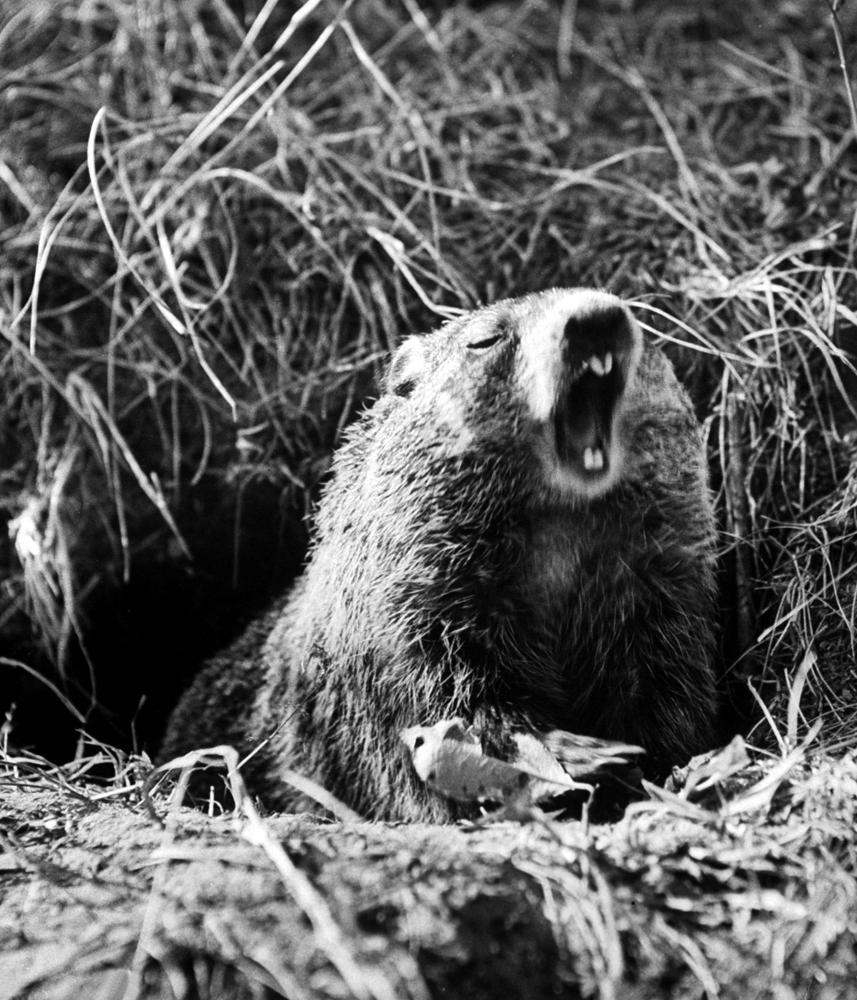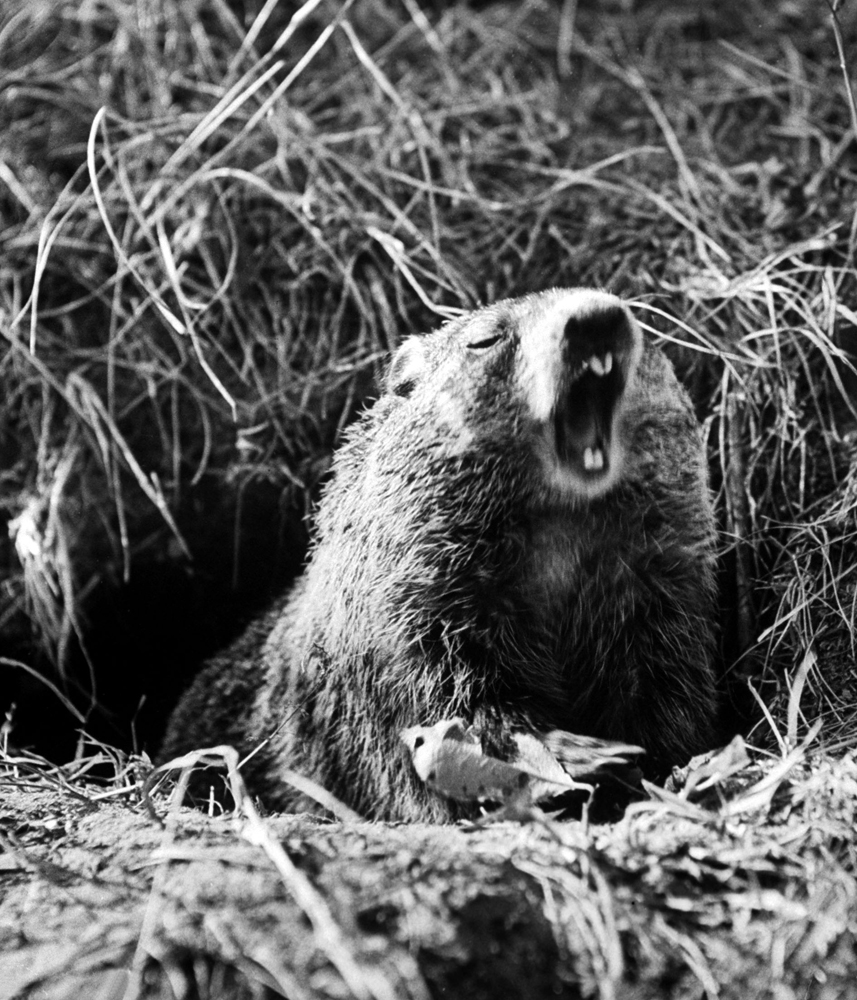
Some call it a woodchuck. Others prefer the more evocative title, “whistle-pig.” But for most of us — and certainly for those who turn their gaze toward Gobbler’s Knob, Pa., in the first week of February each year — the squinty-eyed, sharp-toothed creature in the picture above is, and always will be, a groundhog.
With Groundhog Day upon us — when the most famous groundhog of them all, Punxsutawney Phil, emerges from his burrow and either sees his shadow, or doesn’t — we thought we’d take a moment to praise the often-maligned and largely misunderstood marmot. For example, far from the soft, doughy layabout of popular myth, the groundhog in the wild is an active animal (a single groundhog moves an average of 700 pounds of dirt when excavating a burrow); a fierce defender of its own territory; and a skilled tree-climber — when pursued by predators, at least.
Groundhogs also have a charming habit of whistling when alarmed — hence the whistle-pig moniker — and they really, really like to eat. The average groundhog will consume enough grass, grains, fruit and other non-meat foodstuffs that, if he or she was a 175-pound person, it would be the equivalent of eating a 15-pound salad. Every single day.
We could go on and on, extolling the virtues of the groundhog — and, admittedly, outlining the reasons why lots of people, especially farmers, can’t stand them — but it’s almost time for Phil to make his entrance, and we don’t want to miss it. This winter can’t end soon enough for us.
Happy Groundhog Day.

More Must-Reads from TIME
- Donald Trump Is TIME's 2024 Person of the Year
- Why We Chose Trump as Person of the Year
- Is Intermittent Fasting Good or Bad for You?
- The 100 Must-Read Books of 2024
- The 20 Best Christmas TV Episodes
- Column: If Optimism Feels Ridiculous Now, Try Hope
- The Future of Climate Action Is Trade Policy
- Merle Bombardieri Is Helping People Make the Baby Decision
Contact us at letters@time.com